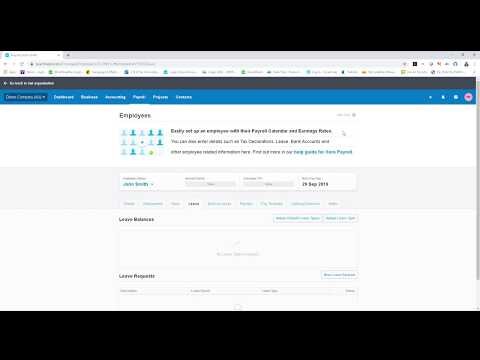Contents:


After an example, it’s time to dive into the interpretation of the formula and find out what the days inventory outstanding formula is trying to tell your business. A high day in inventory outcome indicated that your business is not quick enough to turn its inventory into sales. In contrast, low days in inventory numbers signify that your company is doing well in turning over its list into cash.

Inventory turnover refers to the frequency at which a company’s inventory needs to be replenished over a given time. They all have their own acronyms, which may make you think they’re different from inventory days in some way. Supply Chain Management Learn about how supply chain management is all about getting the right products at the right time.
Inventory turnover vs days inventory outstanding
A lower DIO ratio usually indicates that a company is doing a better job of managing inventory. Read on to learn all there is to know about days inventory outstanding. In order to efficiently manage inventories and balance idle stock with being understocked, many experts agree that a good DSI is somewhere between 30 and 60 days. This, of course, will vary by industry, company size, and other factors. Below is the list of top companies in the Oil & Gas Sector, along with its Market cap and inventory days outstanding. Below is the list of top companies in Discount Stores and their Market cap and outstanding inventory days.
Lowering your https://bookkeeping-reviews.com/ days on hand should be a priority for your business. With properinventory controland management, you can account for and prevent stockouts, no matter how small or large your business is. With the right inventory management software, merchants can set up automatic reorder point notifications when SKU levels reach certain thresholds, which enables you to reorder inventory at just the right time. Some systems even allow merchants to fully automate the purchase order process to avoid replenishing inventory too early or too late. It’s increasingly more challenging for ecommerce businesses to predict accurate inventory counts as new customers can come in from all over the world, making demand harder to predict than ever before.
But think of two companies with a January 1 to December 31 fiscal year. They both begin the year with $1,000,000 of inventory and end the year with $1,200,000 of inventory. Both companies would report an “average inventory” level of $1.1 million. Because inventory is typically a merchant’s biggest investment, inventory days on hand is an important measurement to understand how long capital is tied up in inventory. Merchants should then work to optimize the procurement and sales process to shorten than time. In short, the faster a merchant sells through their available inventory, the faster they will see a return on their capital investment.
Days inventory outstanding example
The days of sales in inventory use ending inventory whereas inventory turnover uses average inventory. Also, The number of days in a year is using 365 days but in some cases, you can be directed to use 360 which is widely accepted. Compare your company’s average inventory days with that of other companies, and if possible, try to compare with the industry average value. A low average inventory processing period indicates that the company is able to keep its inventory liquid so there will be no significant impact on its cash flow and operations.

We’ll assume that you’ve revzilla promo code reddit march 2021d your cost of goods sold , but you can read our full analysis on COGS and contribution margin here. You can use the days sales in the inventory calculator below to quickly calculate the number of days a company needs to sell all its inventory by entering the required numbers. A high days sales in inventory suggests a company is poorly managing its inventory. A company in the food industry will obviously come up with a much lower inventory processing period than that of a company that sells industrial products.
Company
Managing inventory levels is vital for most businesses, and it is especially important for retail companies or those selling physical goods. Ending inventory is based upon the amount of stock the company has left at the end of the year, and it states the value of merchandise that is still up for sale. It can ensure the most accurate calculations by physically counting the leftover inventory at the end of the period that is being examined. That being said, many big-scale companies do not have the time and ability to account for their inventory physically, choosing to work with unique software systems that assist them in inventory management. Ending inventory, often included in the company’s balance sheet, is a crucial metric in defining the company’s liquidity and obtaining financing from investors. Another critical component of the days in inventory formula is the cost of goods sold.
How to Get Working Capital For Retail Inventory? – Nav
How to Get Working Capital For Retail Inventory?.
Posted: Fri, 14 Oct 2022 07:00:00 GMT [source]
For internal use, a business may want to calculate DII for different products as well. Think about the milk-seller versus Target, keeping in mind that Target sells milk, too. That’s an average number, and if the DII for different product types vary greatly — maybe it’s 10 days for dairy products and 100 days for furniture — the blended figures may not be particularly telling.
Colgate’s DIO has been stable over the years and is currently at 70.66 days. However, when we compare this with Procter and Gamble, we note that P&G’s outstanding inventory has decreased over the years and is currently 52.39 days. From determining the DIO of each brand, you can easily see which brands are doing well relative to other brands. In this case, Brand 2 is doing extremely well, while Brands 1,3, and 4 are all lagging about equally behind. The manager may then meet with the sales and marketing team to try to figure out how to improve sales of those brands. The company might consider dropping Brand 3, the poorest performer, entirely.
In fact, DIO measures the effectiveness of your inventory management strategies. This is also important for holiday inventory management and inventory storage practices as it can help avoid overselling. A company’s inventory turnover is also essential and it is calculated using the inventory turnover rate and the inventory turnover formula. This represents the number of times a company has sold and replaced its inventory.
It can be used to assess how well a company is managing inventory processing. If the inventory is turning over quickly, that’s usually a good sign. However, if products are sitting on shelves for too long, it could be an indication that the company is overproducing or that demand has decreased.
Which Industries Have the Highest Inventory Turnover? – Investopedia
Which Industries Have the Highest Inventory Turnover?.
Posted: Sat, 25 Mar 2017 17:34:40 GMT [source]
And a great way to lower it is to start automating your inventory management and online marketplace presence with software like BlueCart. By streamlining communication, ordering, and fulfillment up and down the supply chain, BlueCart makes it easy to understand and improve inventory control. There are different ways with the help of which you can measure your business’ efficiency. It’s really important to understand the way your inventory is flowing so that you can make important decisions to improve it. Days inventory outstanding is one such metric that helps you get hold of your operations and sales proficiency. You should be relying on your inventory management software for critical measures such as DIO.
Investors and financial analysts use the days of inventory on hand as a tool to assess how efficiently a company manages its inventory dollars. Because this is an aggregate measure, it is minimally useful to managers. They are likely to track how many days it takes sell or use specific products, rather than the aggregate amount. Formula is vital for various reasons since managing your inventory levels on an optimum level is essential for your business regardless of your industry or types of goods or services you sell. Ecommerce businesses nowadays find it more and more challenging to land on accurate stock counts because new customers can come in from all around the globe and complicate the process of predicting solid demand.
For a retail store, a DIO of 52 provides tons of agility and flexibility to try out new products and plan for seasonality. Relatively high DIO can be a signal of distressed inventory management because it means that the stock inventory is held for too long before sold which increases the risk of obsolescence. The reason behind this can be either the purchase of too much inventory or poor sales performance. A low value for DIO indicates that the company is able to sell its inventory fairly quickly.
Then, the COGS can be calculated by dividing the total cost of goods sold in a single year by 365 days. On the other hand, the Average Days to Sell the Inventory metric is calculated by dividing 365 by the Inventory Turnover Ratio. There’s no magic value of the days inventory outstanding, and the result of this measure varies from industry to industry. While you won’t necessarily earn your investment back, you can still write it off, and many customers will appreciate your company’s charitable efforts. There are many adjustments you can make in managing your inventory to reduce the amount of time inventory is sitting on your warehouse shelves. Here are some best practices for optimizing your inventory days on hand.

Adam Hayes, Ph.D., CFA, is a financial writer with 15+ years Wall Street experience as a derivatives trader. Besides his extensive derivative trading expertise, Adam is an expert in economics and behavioral finance. Adam received his master’s in economics from The New School for Social Research and his Ph.D. from the University of Wisconsin-Madison in sociology. He is a CFA charterholder as well as holding FINRA Series 7, 55 & 63 licenses.
- Because this is an aggregate measure, it is minimally useful to managers.
- When it comes to choosing a time frame for the days in inventory formula, many businesses prefer to use 365 days to calculate this time for a fiscal year.
- To manufacture a salable product, a company needs raw material and other resources which form the inventory and come at a cost.
- The articles and research support materials available on this site are educational and are not intended to be investment or tax advice.
Some businesses take an alternative view of the measurement, preferring to accept a longer days of inventory figure in order to carve out a service niche. For example, a business may choose to maintain high inventory levels in order to advertise that it can fill any customer order within 24 hours of order receipt. In exchange for maintaining a large inventory investment, the company charges a high price for its goods. As another example, a company positions itself to be a purveyor of spare parts, which requires it to maintain a significant inventory of spare parts that it may not sell for years.
